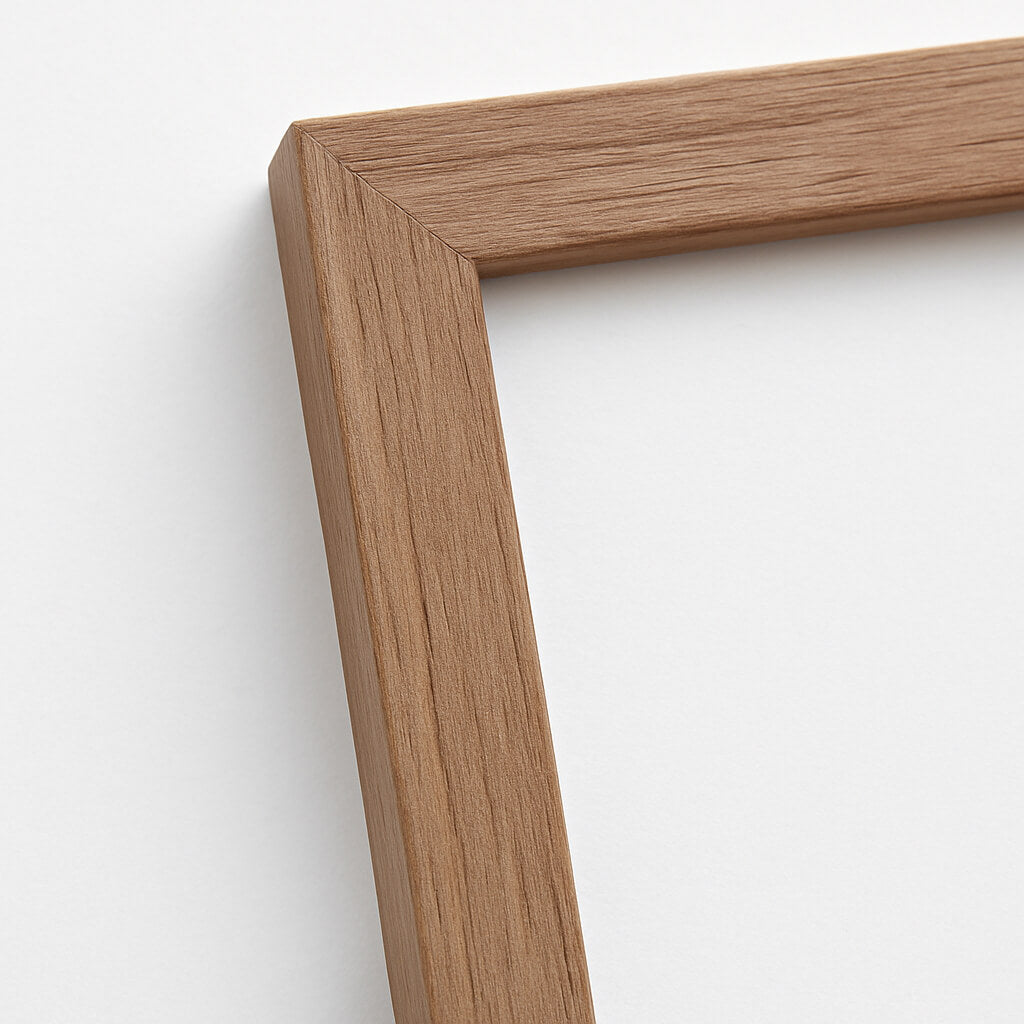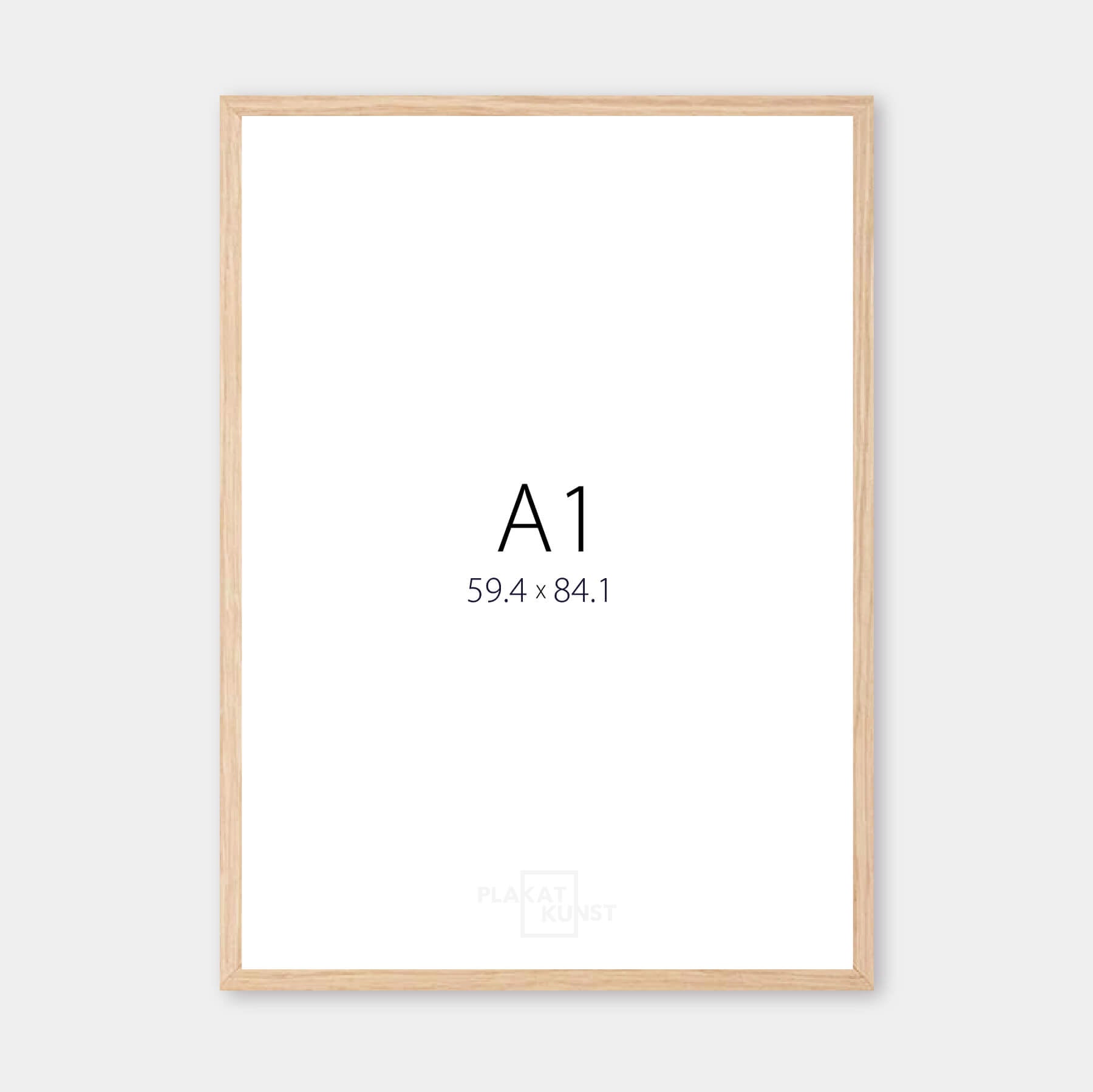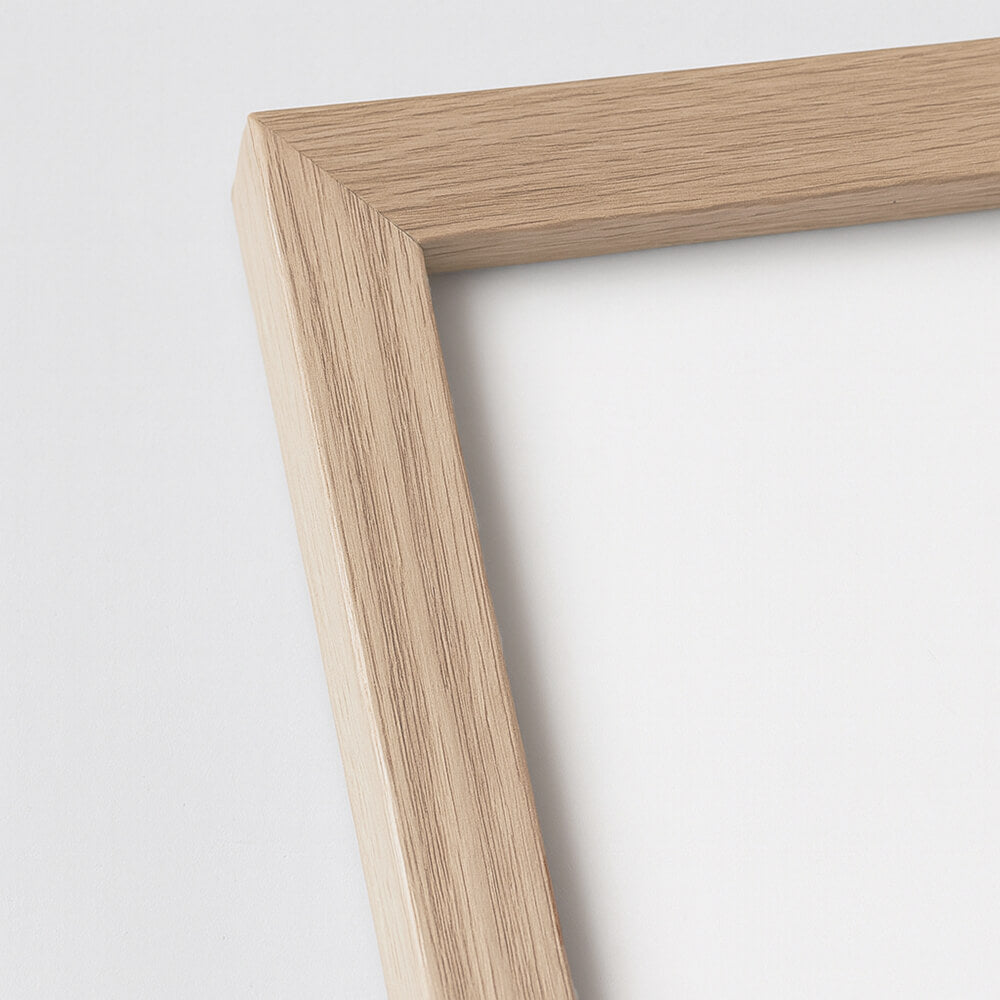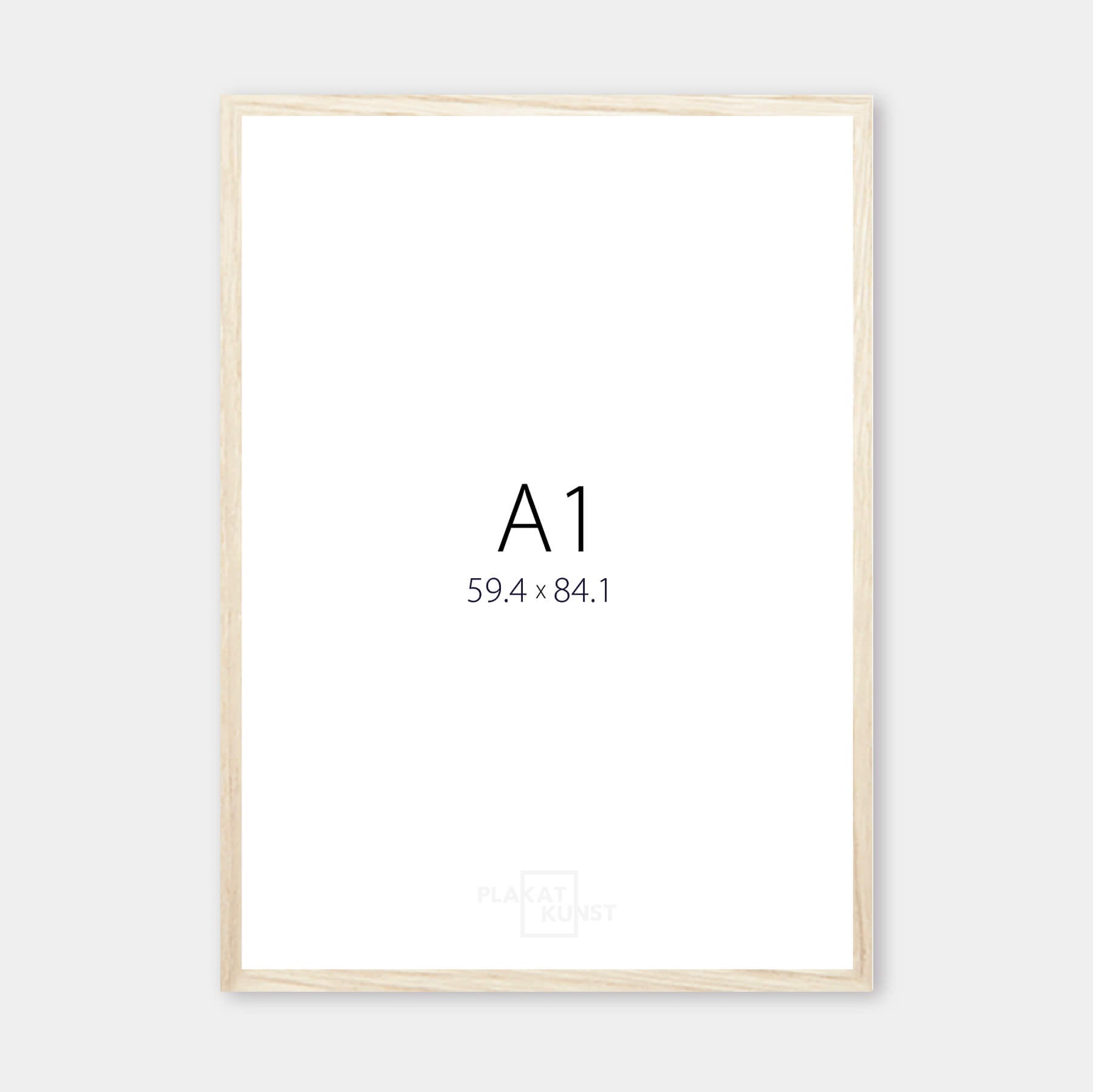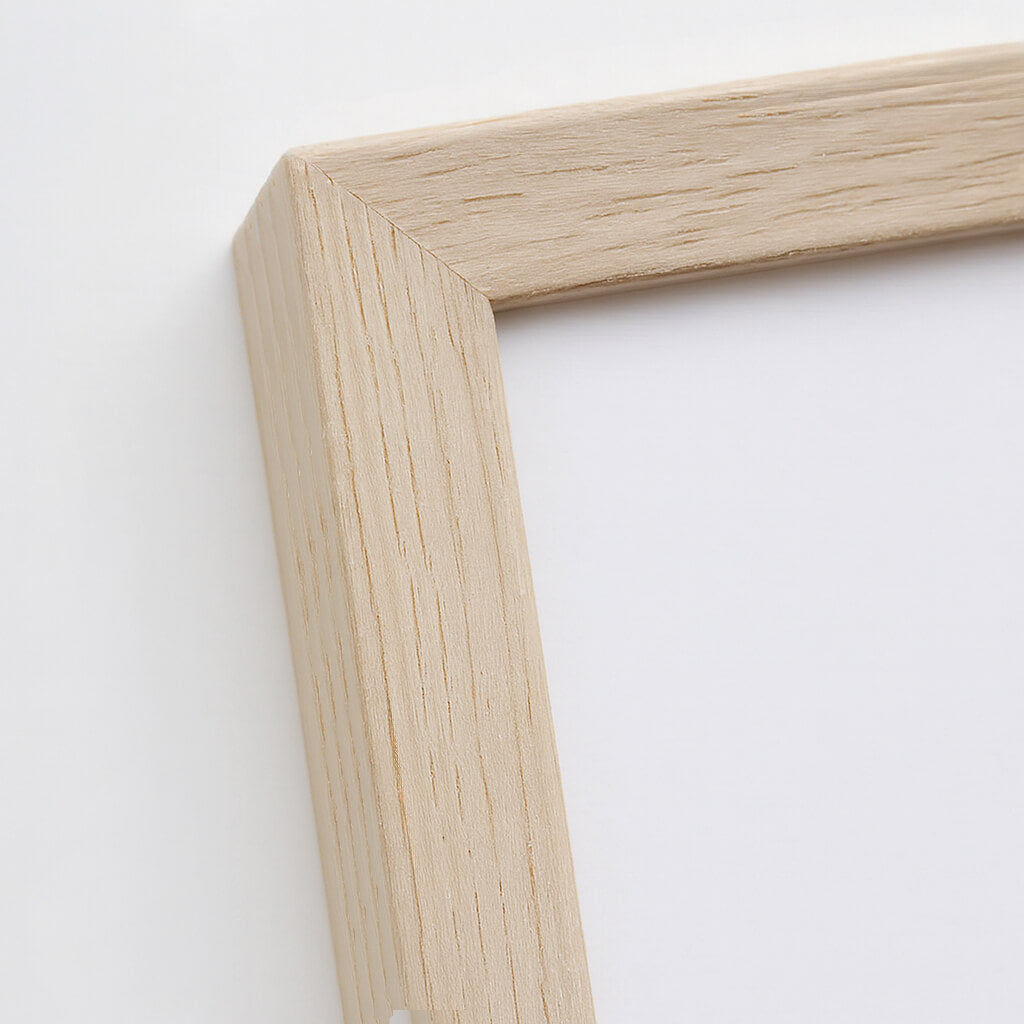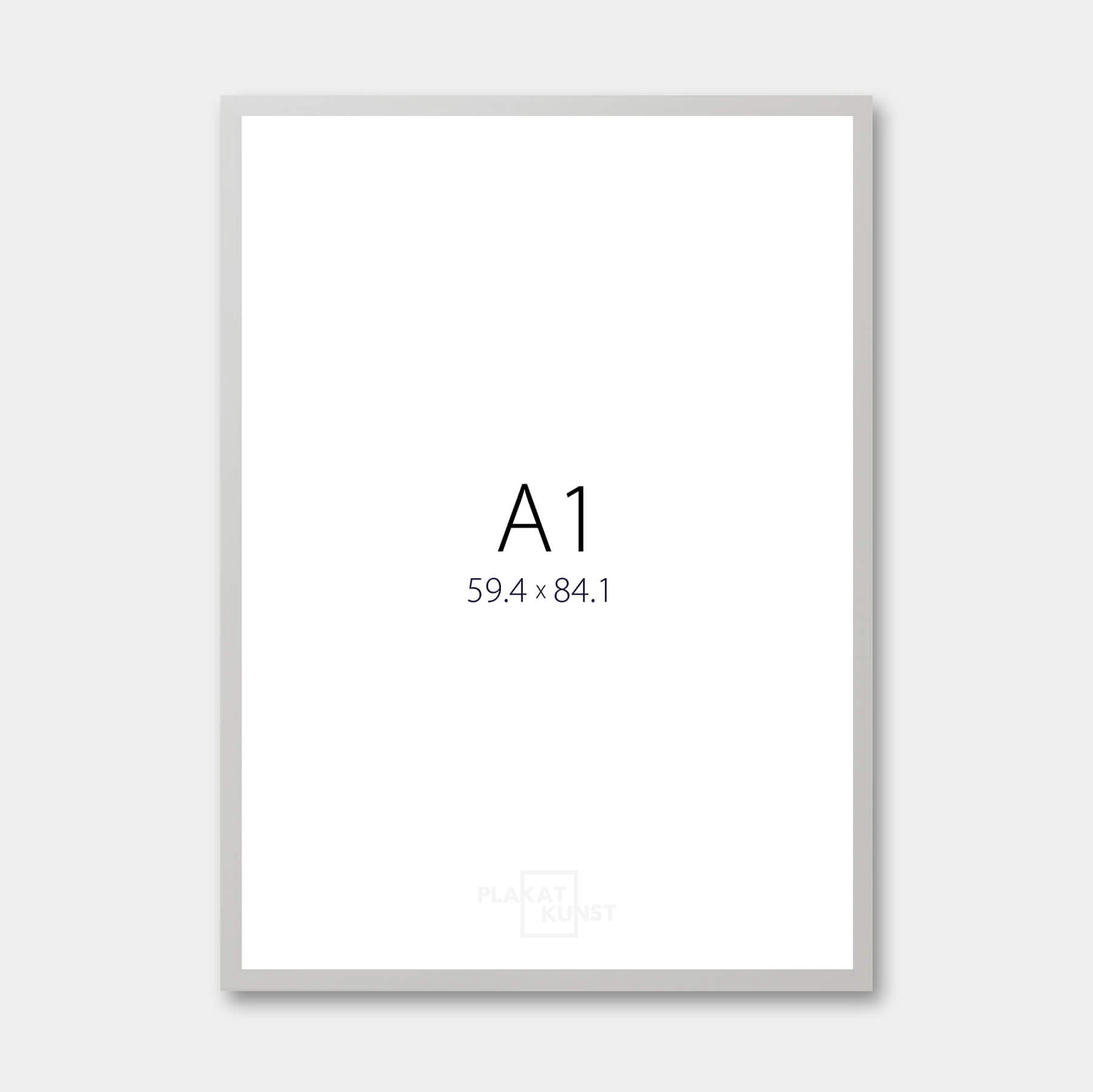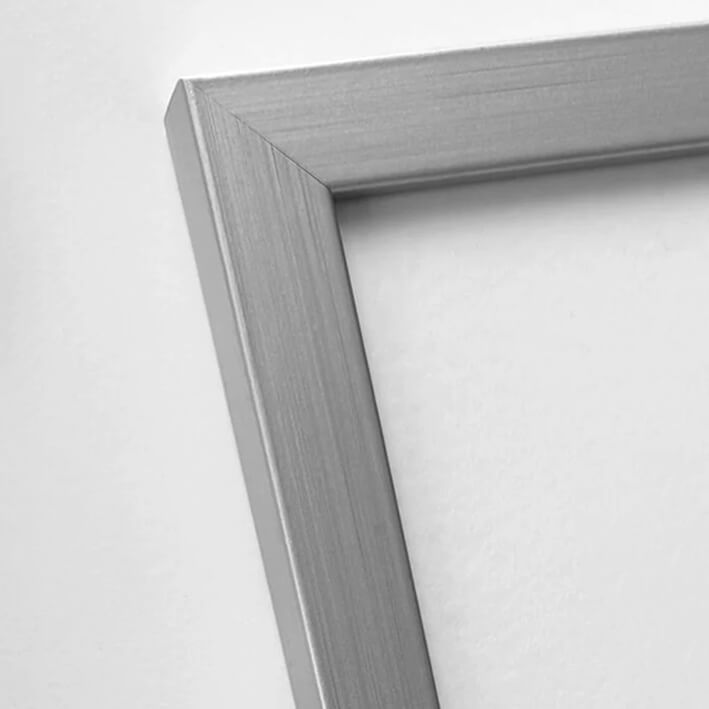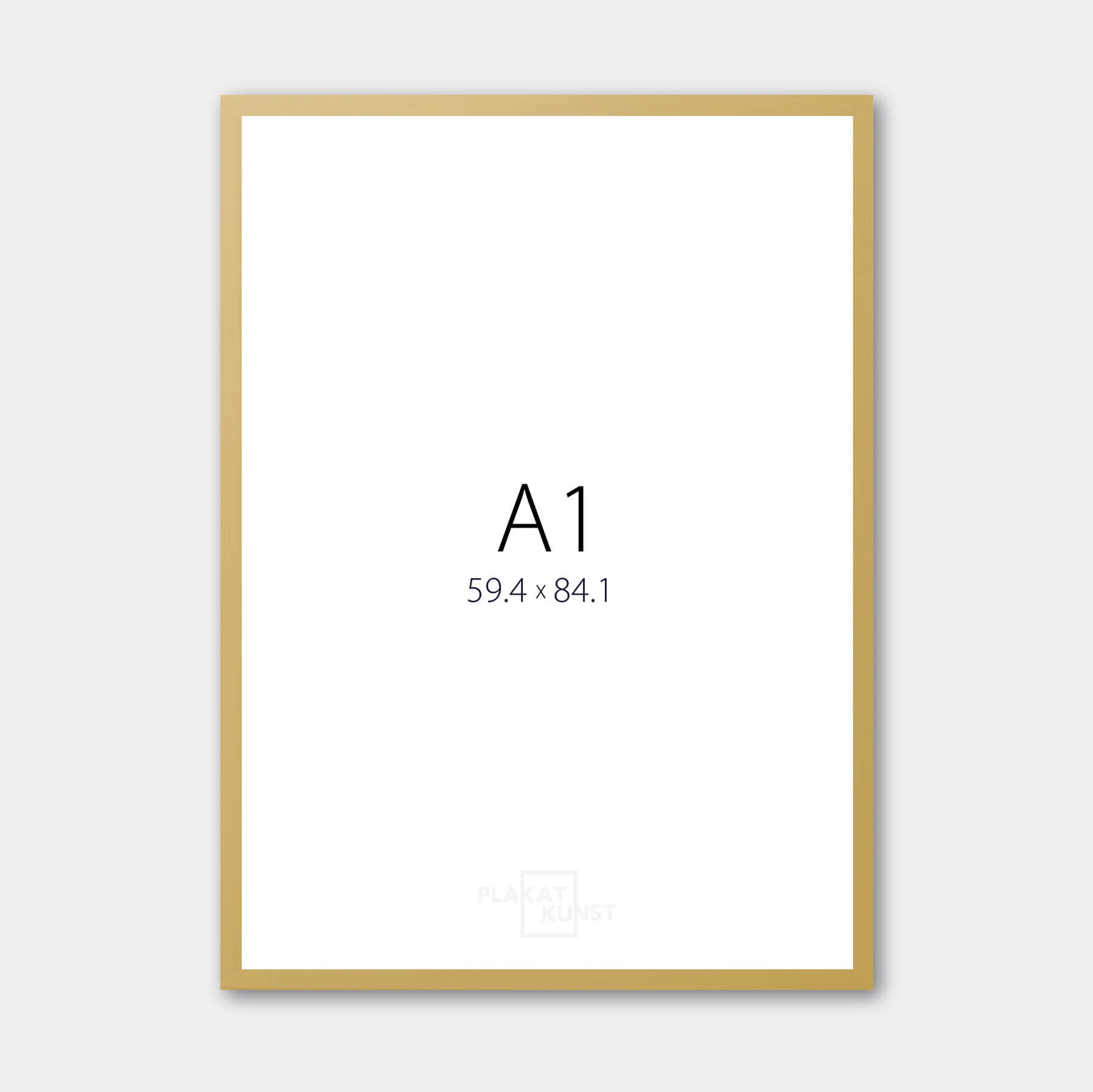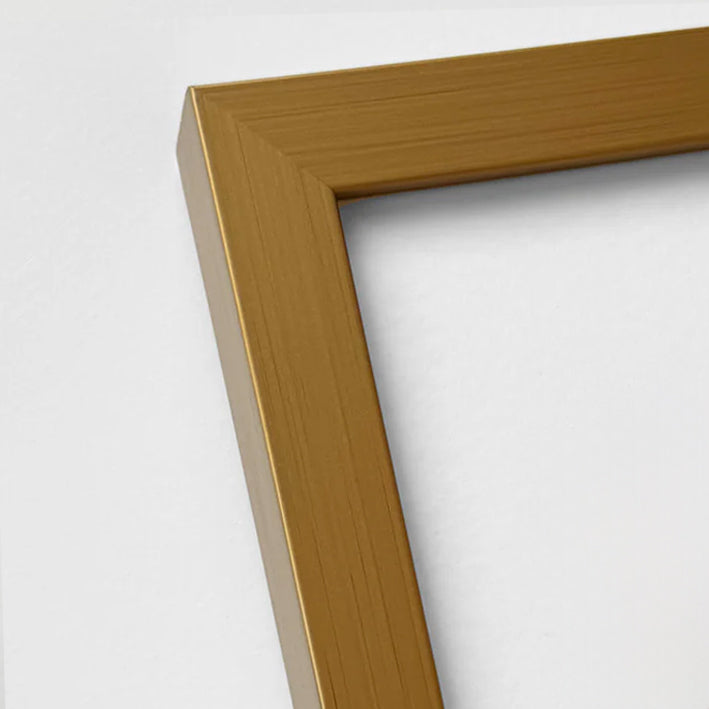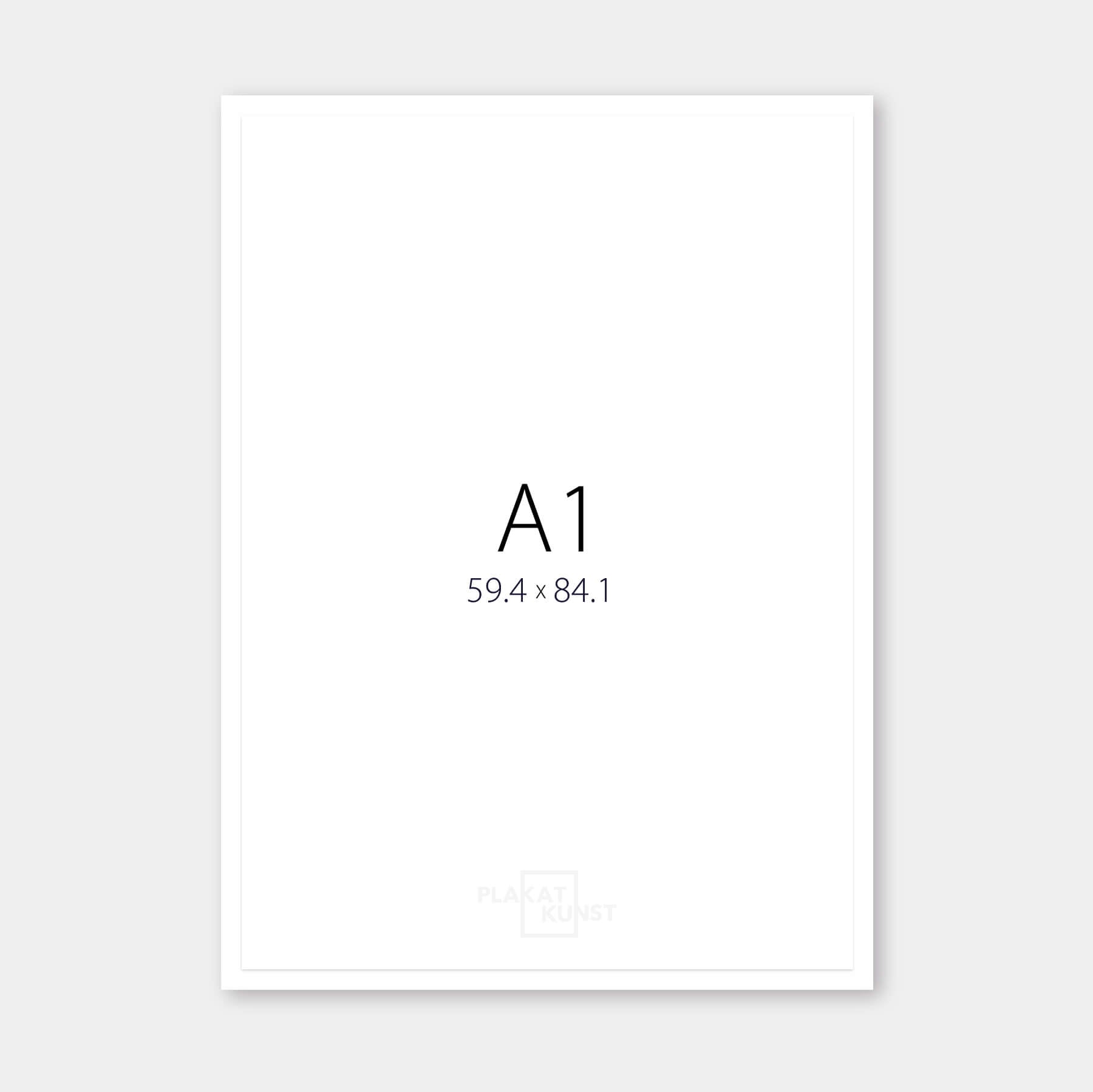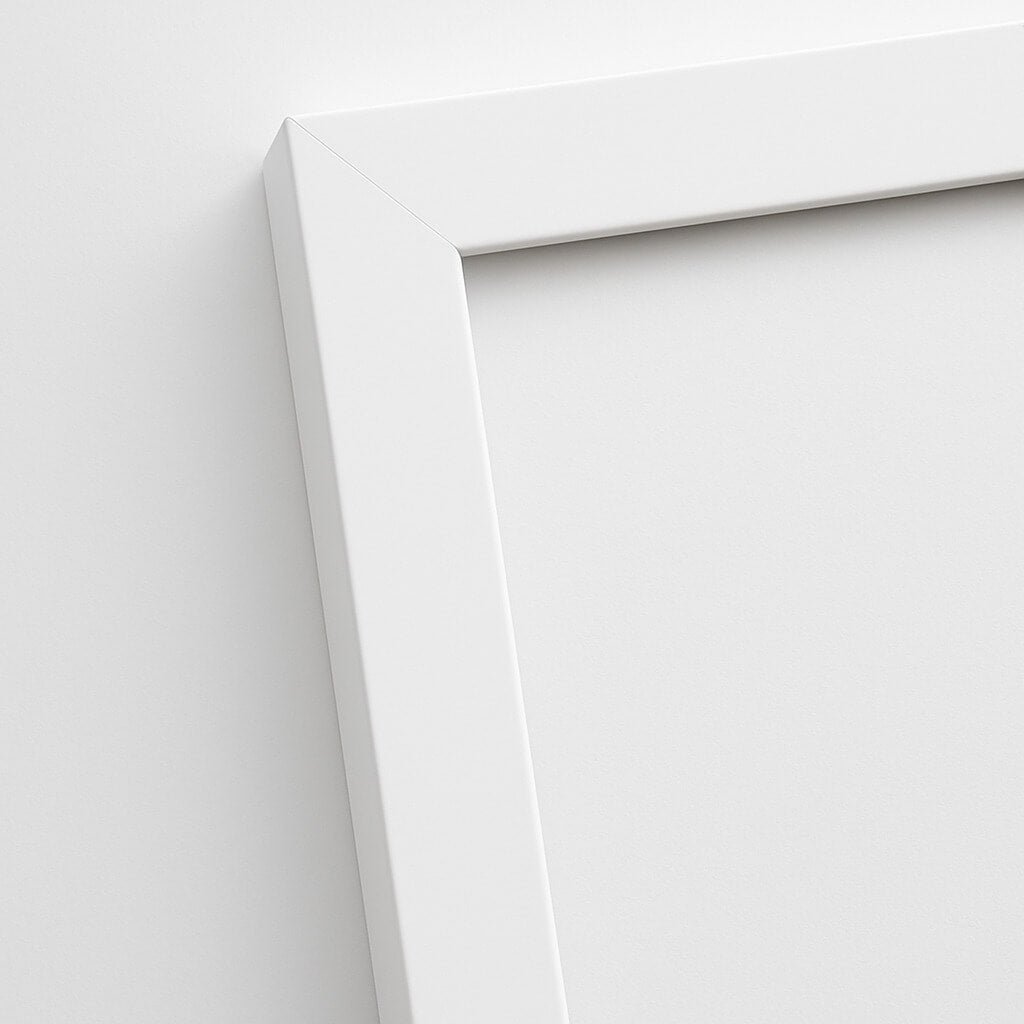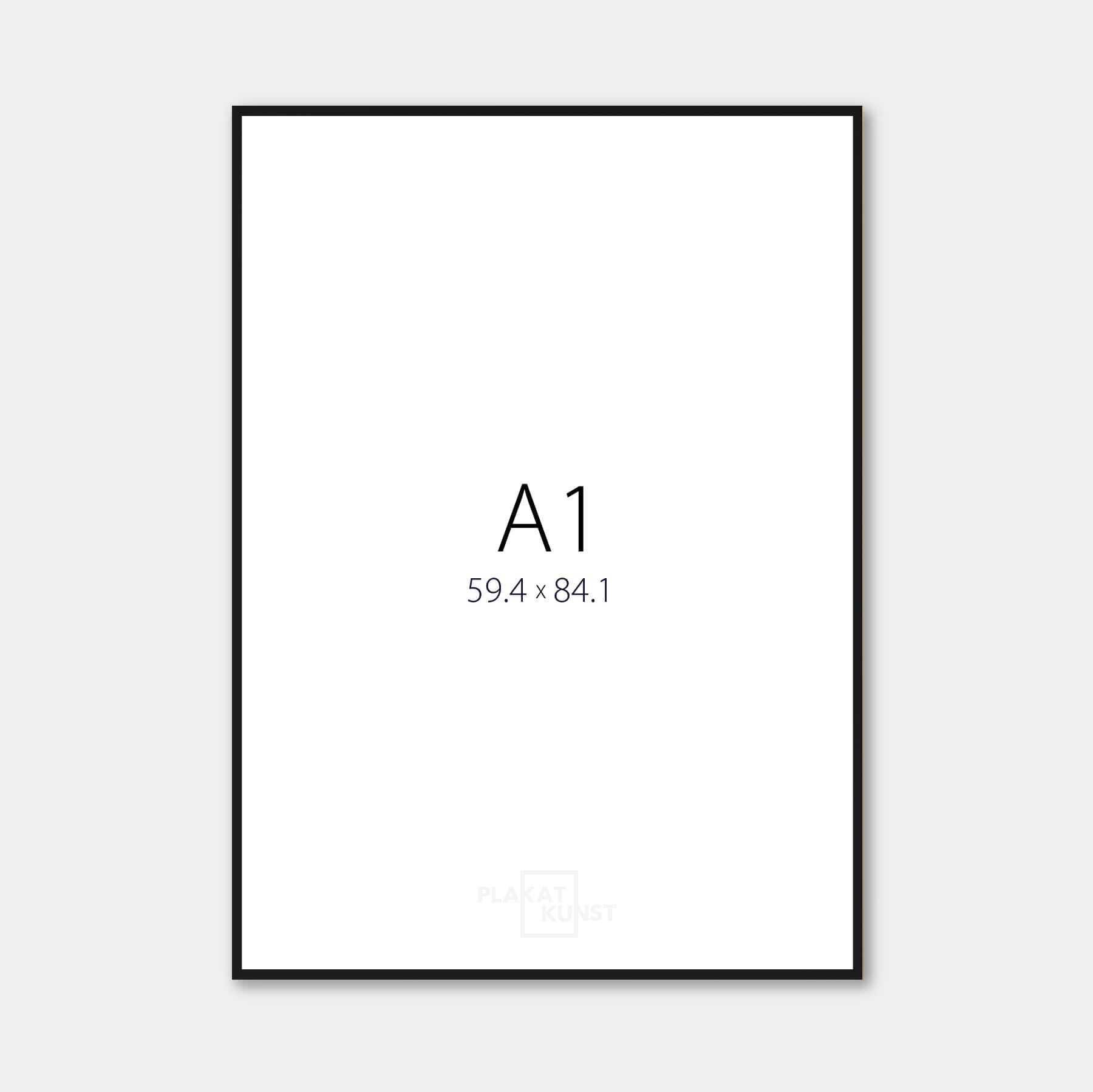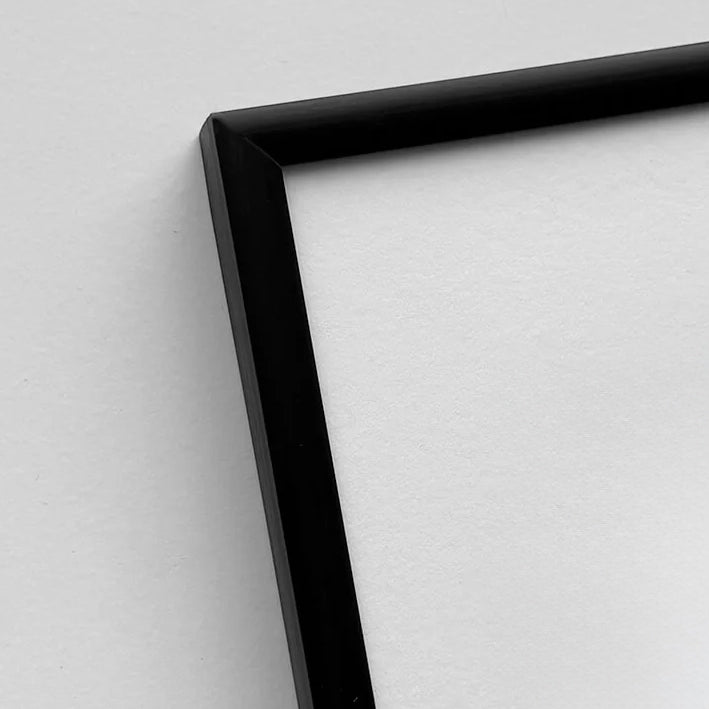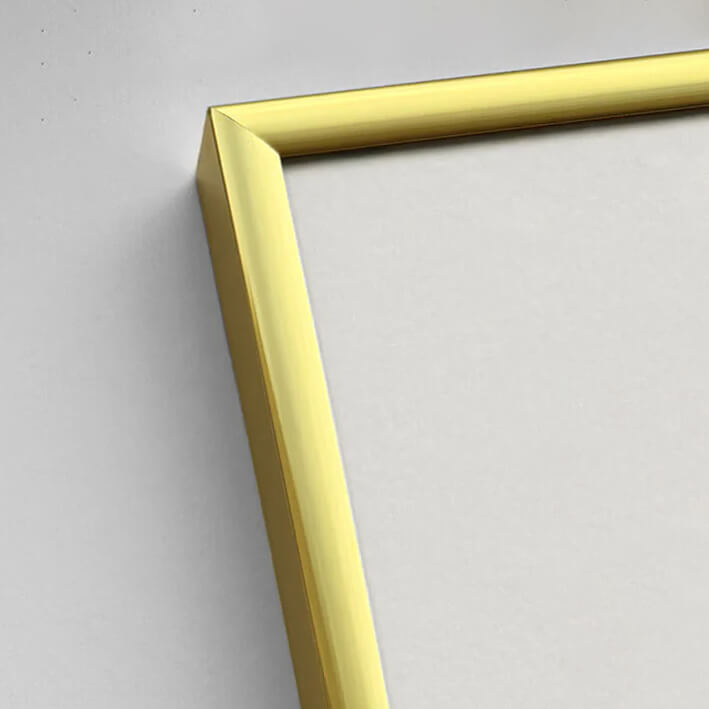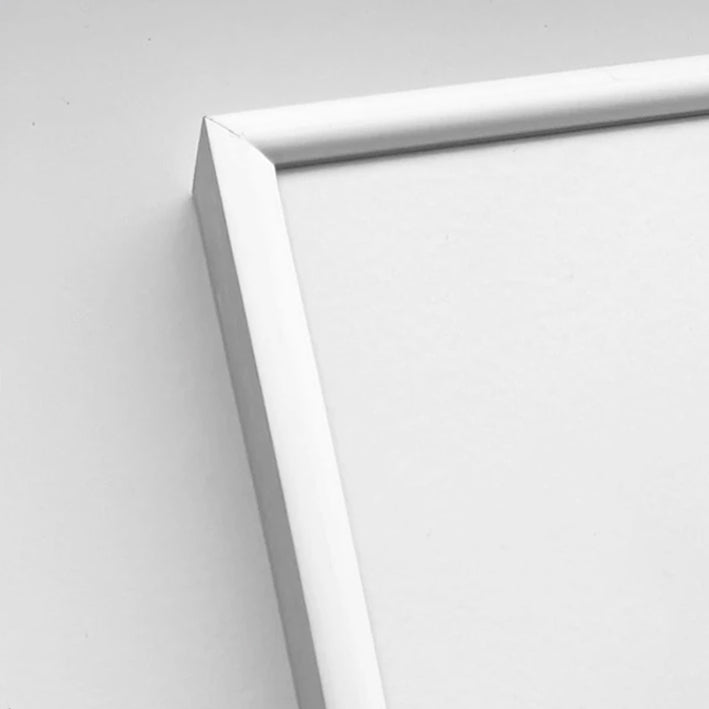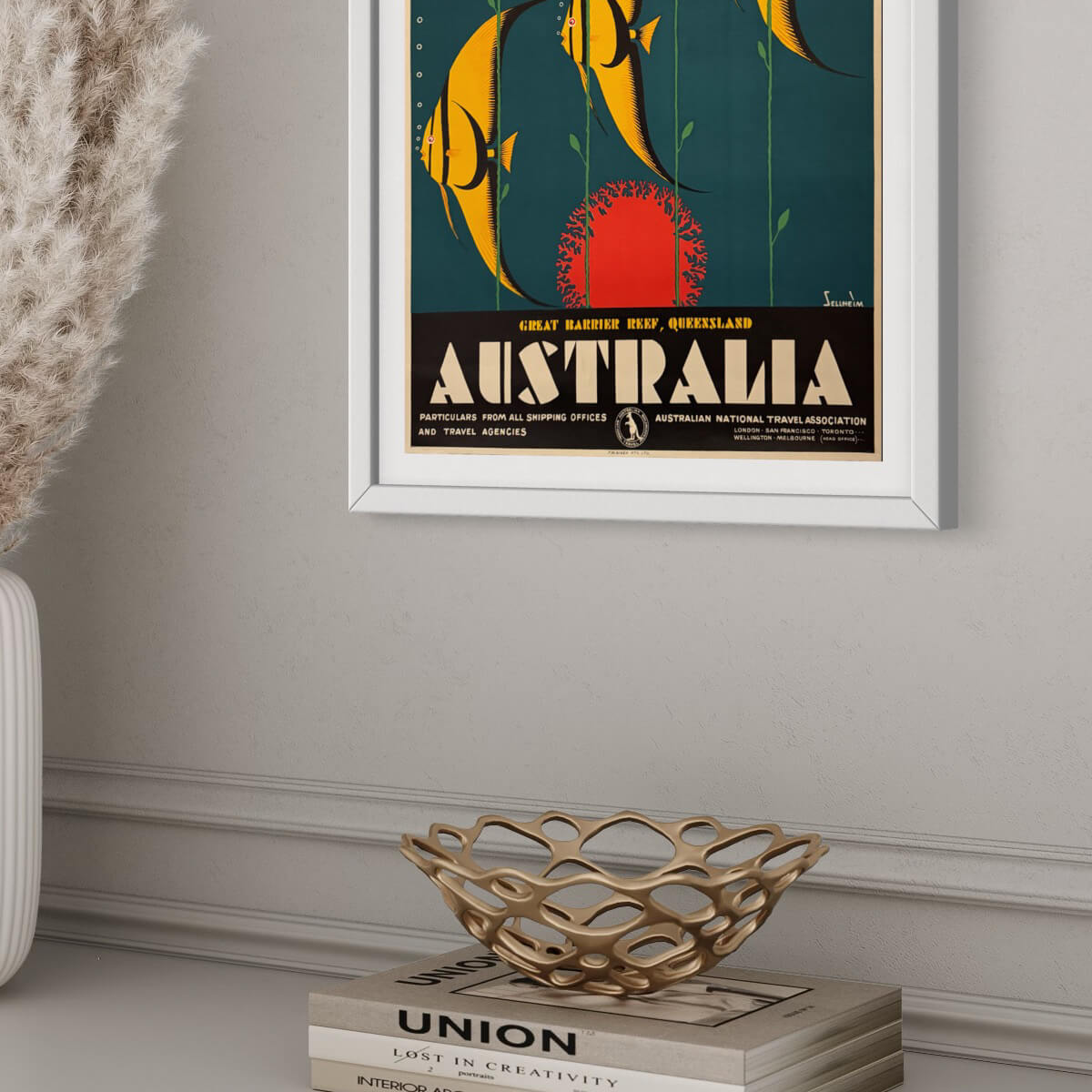
A1 frames with
Passepartout
A1 frames with passepartout can be used to frame all pictures smaller than 59.4 x 84.1 cm.
All our frames can be bought with passepartout in 11 colours, where you define the hole size yourself. You do this by specifying the measurements on your picture, and we will automatically make the hole 1 cm smaller. This gives a 5 mm overlap, with which you can easily attach the poster to the back of your passepartout with tape.
Click on the different A1 frames to see how they look with the many passepartout options.

Choose from glass for
A1 picture frames
The A1 wooden frames can be purchased with a clear, light and shatter-free acrylic glass, which has reflections just like ordinary glass. We also offer two other types of real glass for the A1 frames - namely non-reflective glass and museum glass, which in addition to being non-reflective, have more than 70% UV protection. Where the non-reflective glass is slightly matte, the museum glass is almost invisible. It is therefore also called invisibility glass.

Big differences in
Shipping
Getting an A1 frame from PlakatKunst delivered to your address doesn't have to be expensive, but the price depends on your location. Since we produce and ship out of Denmark, shipping A1 frames to countries in mainland Europe costs 49 EUR, while it's signifcantly more expensive, if you live further away.
Add the A1 picture frame to you cart and proceed to Checkout. Here you can see the shipping price, once you've entered your country.
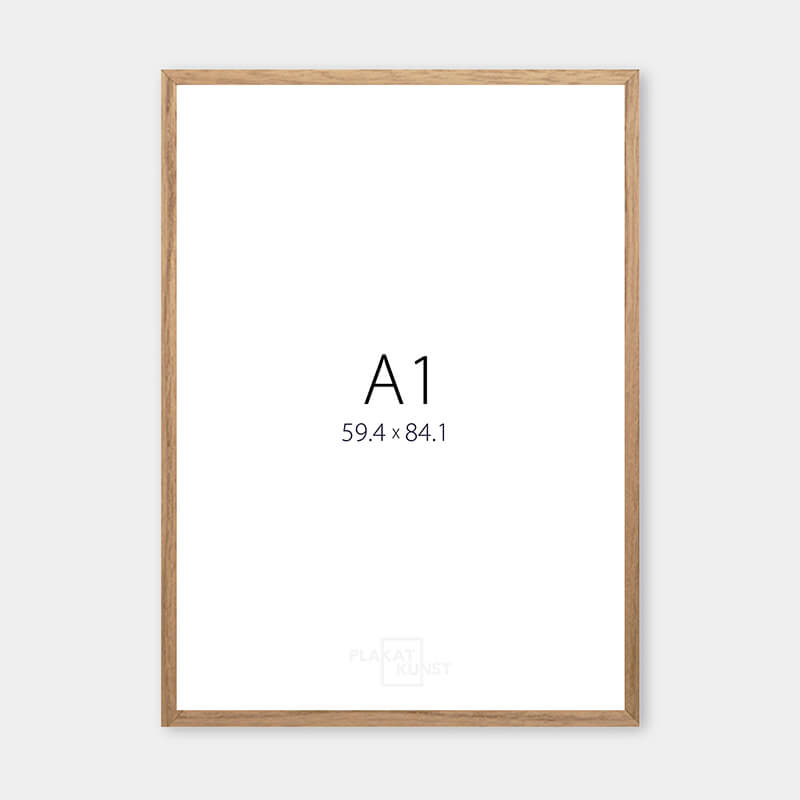
A1 frames without
Insert paper
When you buy an A1 frame from PlakatKunst, it is not delivered with insert paper. It almost always gets thrown out anyway, and is a stone in the shoe in our efforts to keep prices as low as possible.
If you want insert paper, just write it in the comment field of the cart.
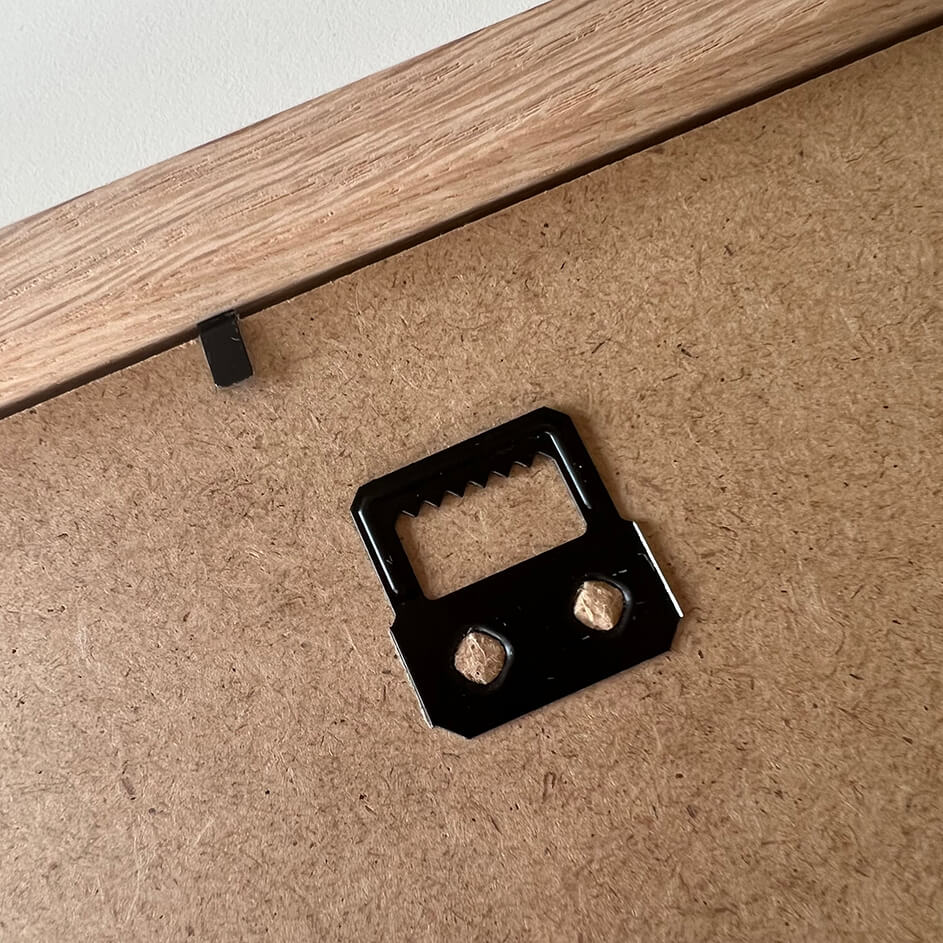
Framing and hanging of
A1 frames
If you buy a poster with an A1 frame, the poster will be framed, the glass polished and the picture frame ready to hang on the wall.
If you are just buying the frame to frame your own poster, you must first tilt the black pins on the back of the frame back so you can remove the masonite backing.
Next, you should run a dry microfiber cloth or similar over both sides of the glass. If you have purchased the frame with acrylic glass, you should instead remove the protective film from both sides of the glass.
On the back of the frame there are two suspension brackets that allow for horizontal or vertical suspension. These must be tilted out slightly and hung on a nail or screw.



